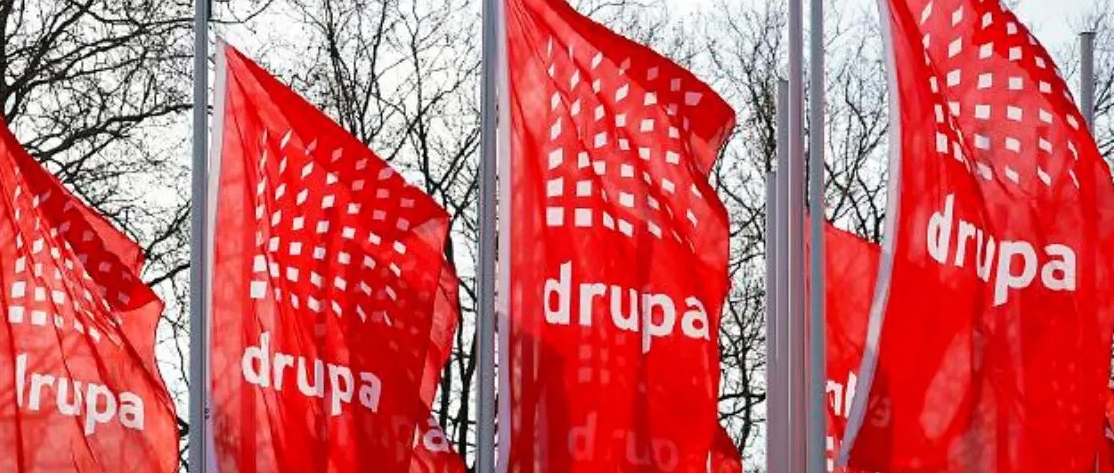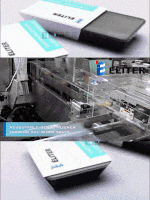Innovation in the future of printing: expectations from drupa 2024
2024-06-24
At the International Media Conference Pre-Drupa 2024, 18 companies announced what technologies and innovations will be presented at Drupa and what topics will be trending at the event.
With the imminent arrival of Drupa 2024, the printing industry is getting ready for the most important fair in the sector globally. On this occasion , the event will bring together the main suppliers and converters in 18 halls of the Messe Düsseldorf Event Center , a place that also hosted the International Media Conference Pre-Drupa 2024.
In this conference space, 18 companies, which are part of the more than 1,400 exhibitors that will be at Drupa 2024 , showed previews of what their exhibition will be at this event, which will take place from May 28 to June 7.

Under two slogans, “We create the future” and “Think digital, be sustainable”, Drupa 2024 seeks to reaffirm itself as the epicenter of printing and its transformation. With a robust exhibition in which visitors will be able to observe new technologies, both in presses and software, and an innovative conference program divided into its 5 forums (Drupa Cube, Drupa Next Age, Drupa Touchpoint Sustainability, Drupa Touchpoint Packaging and Drupa Touchpoint textile) the organization hopes that attendees will have a wide range of knowledge during the days of the fair.
One of the key points in this edition of Drupa will be the constant growth that the packaging and labels sector has experienced in the printing industry. According to Drupa’s ninth report on global trends, in 2023 packaging remained one of the most solid and reliable sectors, and it is expected that in 2024 the economic confidence index in this sector will be the highest in the entire industry.
With that in mind, here are the megatrends that exhibitors believe are shaping print today and what attendees can expect at Drupa 2024.
Megatrends to watch at Drupa 2024
For Andreas Pleßke, CEO of Koenig & Bauer, digitalization is, without a doubt, the most important trend to follow in this edition of Drupa 2024. This transformation, which although it does not last days or months, is essential for the industry to improve in aspects such as efficiency, productivity and sustainability.
In that sense, technologies such as software development and artificial intelligence will be solutions that will allow us to meet the requirements that arise in the face of the constant changes that are occurring in the industry. This is stated by Sabine Geldermann, director of Drupa, who highlighted that in the coming years, sectors such as food and beverages, cosmetics and personal care will drive the growth of packaging and label printing.
However, one of the most important challenges at the industry level is the issue of the lack of talent and young personnel . The technicality and the need to specialize in very specific areas has led to a lack of interest on the part of the younger generations, generating a shortage of trained personnel in the industry.
Digitization
Solutions in digitalization will be something that you will see throughout the entire exhibition . A common point among the 18 companies that presented at Pre-Drupa 2024 was that digitalization plays a key role in revolutionizing the way companies manage and execute their production processes.
The importance of these technologies in optimizing digital printing is indisputable. Firstly, digital printing offers significant advantages in terms of speed and flexibility, especially for short and personalized runs, one of the increasingly common requirements that can make a difference, especially in a region like Latin America.
Additionally, at drupa you will be able to see numerous cloud storage solutions, along with advanced software . These developments allow printers to quickly adjust designs and configurations without the need for long downtime or manual adjustments, thus maximizing productivity and reducing waste. In turn, these platforms facilitate the storage of large volumes of data and access them in real time, facilitating collaboration between teams.
Combining digitalization with traditional printing methods, such as flexography, is also an effective strategy. Scanning can be used for job preparation and proofing, while flexographic printing remains preferred for high volumes due to its efficiency and cost-effectiveness.
This integration allows businesses to take advantage of the best of both worlds: the flexibility and customization of digital with the speed and economy of flexo. This hybrid approach is particularly useful in responding to changing market demands and maintaining competitiveness in the packaging and label industry.
Sustainability
Sustainability is another key megatrend , as it has become a critical focus due to scrutiny of the environmental impact of packaging materials . Many of the solutions that will be showcased at drupa involve machinery that accommodates more sustainable substrates, such as recyclable and biodegradable materials. In addition, the use of ecological inks and printing processes that reduce the amount of chemicals used will also be new at the fair.
Waste management is another fundamental pillar in the industry . Companies are implementing recycling systems into their operations to effectively manage waste generated during the printing process. This includes solvent recovery, paper and plastic recycling, and waste reduction through more precise printing techniques.
The adoption of digital technologies such as RFID also allows product monitoring in value chains, minimizing the carbon footprint and offering valuable information, not only for the consumer, but also for brand owners who can optimize their logistics processes.
Lack of young and trained staff
As mentioned above, one concern is the shortage of young talent attracted to packaging or label printing. This sector requires a high degree of technicality and specialization in its processes and techniques, aspects that are often not attractive to new generations, who may perceive these careers as less dynamic or innovative compared to other technological areas.
Against this backdrop, the incorporation of technologies such as automation has become a priority. The automation of different processes not only improves efficiency and precision in production, but also makes work in the industry more attractive for young personnel.
More modern equipment and automated systems can reduce the manual workload, making it less tedious and more interesting from a technological point of view. This modernization helps present packaging and label printing as an innovative field and aligned with technology industries that usually attract young people.
At Drupa 2024 you will be able to see different automation solutions, from robotics and its impact on productivity, as well as new platforms that reduce processes in the design and pre-press phases.
Sabine Geldermann stated that there are other effective strategies to address the shortage of young talent. One of them is the formation of strategic alliances with educational institutions , such as the University of Stuttgart, where students from different areas, such as design, can interact directly with the industry.
These collaborations not only provide students with valuable practical exposure, while allowing them to see the relevance and potential for innovation within the sector. Bringing students closer to the industry through joint projects, internships and training programs can be crucial in revitalizing interest and ensuring a new generation of professionals who are well prepared and enthusiastic about their contribution to the packaging and label printing industry.




